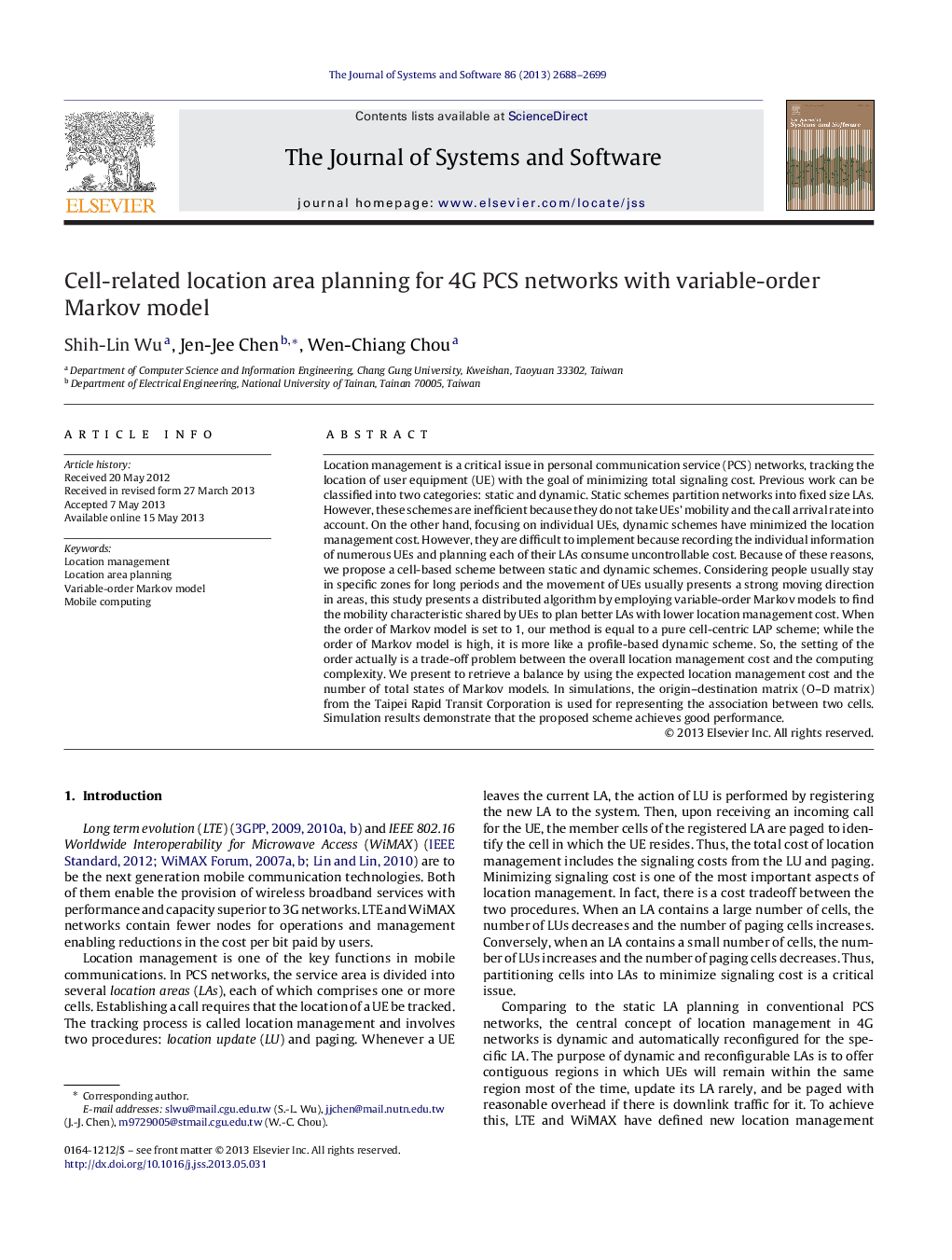| کد مقاله | کد نشریه | سال انتشار | مقاله انگلیسی | نسخه تمام متن |
|---|---|---|---|---|
| 461800 | 696632 | 2013 | 12 صفحه PDF | دانلود رایگان |

• We propose a distributed location management scheme between static and dynamic schemes.
• We use variable-order Markov models to find mobility patterns shared by UEs.
• The planned LAs are allowed to be overlapped with other LAs which are now supported by 4G standards, i.e., LTE and WiMAX.
• The O–D matrix from the Taipei Rapid Transit Corporation is referred in our simulation.
• We illustrate how to apply the proposed scheme over IEEE 802.16 networks.
Location management is a critical issue in personal communication service (PCS) networks, tracking the location of user equipment (UE) with the goal of minimizing total signaling cost. Previous work can be classified into two categories: static and dynamic. Static schemes partition networks into fixed size LAs. However, these schemes are inefficient because they do not take UEs’ mobility and the call arrival rate into account. On the other hand, focusing on individual UEs, dynamic schemes have minimized the location management cost. However, they are difficult to implement because recording the individual information of numerous UEs and planning each of their LAs consume uncontrollable cost. Because of these reasons, we propose a cell-based scheme between static and dynamic schemes. Considering people usually stay in specific zones for long periods and the movement of UEs usually presents a strong moving direction in areas, this study presents a distributed algorithm by employing variable-order Markov models to find the mobility characteristic shared by UEs to plan better LAs with lower location management cost. When the order of Markov model is set to 1, our method is equal to a pure cell-centric LAP scheme; while the order of Markov model is high, it is more like a profile-based dynamic scheme. So, the setting of the order actually is a trade-off problem between the overall location management cost and the computing complexity. We present to retrieve a balance by using the expected location management cost and the number of total states of Markov models. In simulations, the origin–destination matrix (O–D matrix) from the Taipei Rapid Transit Corporation is used for representing the association between two cells. Simulation results demonstrate that the proposed scheme achieves good performance.
Journal: Journal of Systems and Software - Volume 86, Issue 10, October 2013, Pages 2688–2699